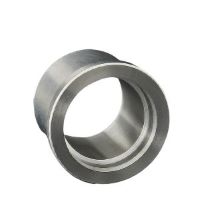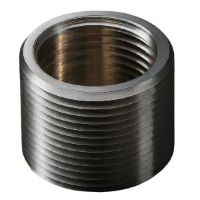When it comes to plumbing and piping systems, reducer pipe fittings are the unsung heroes. These simple parts are crucial. They ensure smooth flow and prevent problems like turbulence and cavitation.
In this blog post, we’ll explore reducer pipe fittings. We’ll cover their types, benefits, and uses. Also, we’ll discuss how to choose the right one for your needs.
What are Reducer Pipe Fittings?
Reducer pipe fittings, as the name suggests, are used to connect pipes of different diameters. They occur in a variety of forms and sizes, but the most prevalent are:
➡️ Concentric reducers:
➡ They have a straight, symmetrical design. It has a smooth transition between the larger and smaller diameters.
➡️ Eccentric reducers:
➡ These have an offset design, with the smaller diameter located to one side of the fitting. This is useful when space is limited or when the flow needs to be directed in a specific direction.
➡️ Reducing tees:
➡ These combine a reducer with a tee. They allow for branching off a smaller pipe from a larger main line.
Reducer fittings are made from various materials, including:
➡️ Steel: Strong and durable, suitable for high-pressure applications.
➡️ Stainless steel: Corrosion-resistant and hygienic, ideal for food and medical applications.
➡️ PVC: Lightweight and cost-effective, commonly used in drainage and irrigation systems.
Benefits of Using Reducer Pipe Fittings
Reducer pipe fittings offer many advantages. They are better than using different sized pipes directly.
➡️ Improved flow efficiency:
➡ The slow change in diameter reduces turbulence and pressure drops. This keeps flow consistent throughout the system.
➡️ Reduced turbulence and cavitation:
➡ Smooth transitions prevent the formation of eddies and air pockets that can damage pipes and equipment.
➡️ Flexibility and adaptability:
➡ Reducers allow for connecting pipes of different sizes. They create more versatile and adaptable pipes.
➡️ Cost-effectiveness:
➡ Using the correct reducer can optimize material usage and reduce the overall cost of the piping system.
Choosing the Right Reducer Pipe Fitting
Selecting the right reducer fitting requires considering several factors:
➡️ Pipe diameter and schedule:
➡ Ensure the reducer matches the diameters and pressure ratings of the pipes it connects.
➡️ Material compatibility:
➡ Choose a material compatible with the fluid being transported and the environmental conditions.
➡️ Flow rate and pressure requirements:
➡ Select a reducer that can handle the expected flow rate and pressure without compromising performance.
➡️ Installation environment and space constraints:
➡ Consider the available space and accessibility for installation.
➡️ Budget and available options:
➡ Compare different options based on your budget and project requirements.
For plumbing, HVAC, or industry, consult with pros. They will ensure you choose the right reducer fitting.
Installation and Maintenance
Installing reducer pipe fittings is generally straightforward, but following proper procedures is crucial:
➡️ Follow the manufacturer’s instructions:
➡ Each fitting may have specific installation guidelines.
➡️ Use appropriate tools and materials:
➡ Ensure you have the correct tools and materials for cutting, threading, and connecting the pipes.
➡️ Ensure proper alignment and sealing:
➡Tighten connections securely to prevent leaks.
➡️ Regularly inspect for leaks and damage:
➡ Proactive maintenance helps identify and address potential issues early on.
Conclusion
Reducer pipe fittings are vital. They ensure smooth, fast flow in many pipe systems. By knowing their types, benefits, and how to choose them, you can pick the right reducer for your needs. This will help make a reliable and well-functioning system.
Remember, consult with professionals for advice. Also, stick to proper installation and maintenance practices. This is key to getting the most from these useful fittings.
Post time: Mar-26-2024



